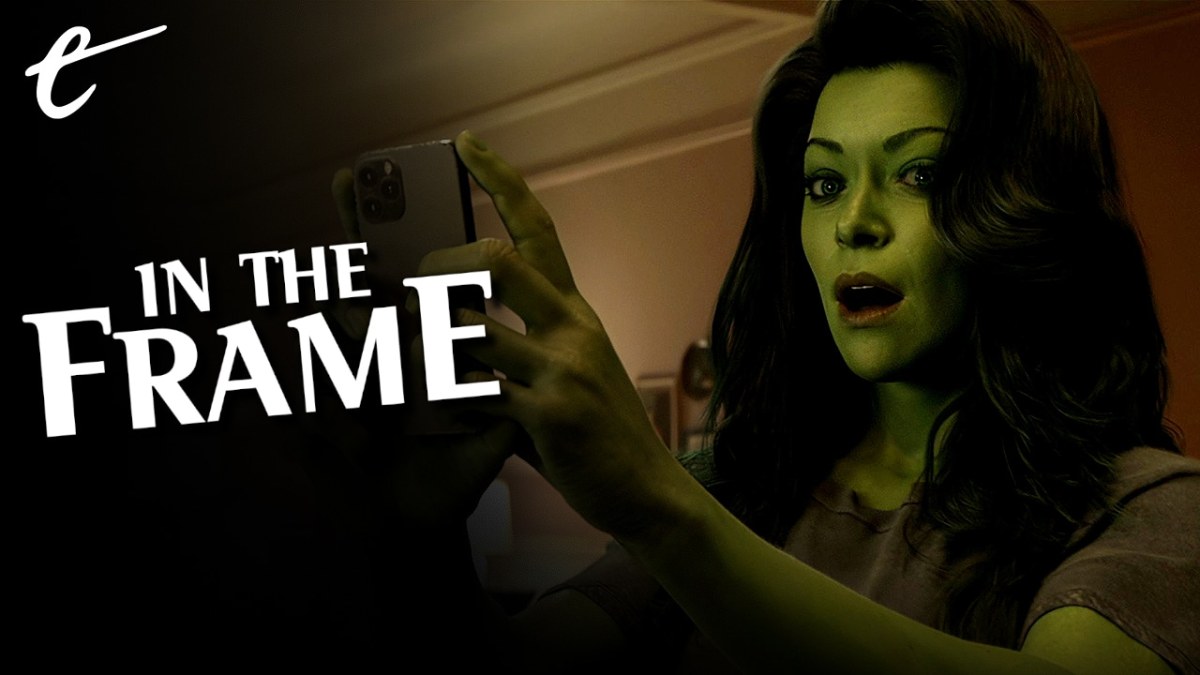The first trailer for She-Hulk released last week, and one of the first things that people talked about was the CGI.
On Twitter, the hashtag trended, alongside the words: “The CGI.” Journalist Josh Spiegelman joked that it was always a good sign when one of the most common reactions to a trailer was, “…The effects are unfinished, right?” Sites like ScreenRant and Total Film ran stories covering the somewhat questionable special effects that had been used to transform actor Tatiana Maslany into the giant green superhero. It sparked a debate on the use of computer-generated imagery in these projects.
Before getting into the discussion itself, it is worth conceding two major points. Most obviously, CGI is a tool like any other. It is just one way of realizing a particular vision on screen. As such, these sorts of computer-rendered effects can be used well. Just last year, Dune demonstrated the effectiveness of judiciously applied computer-generated effects. Likewise, whatever one thinks of the narrative of Avatar, the special effects are great.
They can be used minimally, to augment an otherwise grounded production. For example, practical effects proponent Christopher Nolan used CGI to great effect in realizing the character of Two-Face (Aaron Eckhart) in The Dark Knight. However, they can also be used to create a compelling sense of hyper-reality. To pick an example from within the same larger franchise as She-Hulk, Rocket Raccoon (Sean Gunn, Bradley Cooper) is a brilliant computer-generated character.
The other major point to concede is that, yes, the special effects on She-Hulk may not be completed yet. After all, it is not due to premiere for another three months. That leaves a reasonable amount of time to finish rendering and to smooth out any issues. That said, it’s also worth acknowledging that Disney made a conscious choice to release this trailer with these effects, understanding that the project would be judged by reference to these visuals. It is fair game for criticism.

More to the point, the debate over the She-Hulk trailer is just an example of a long-simmering tension boiling over. Recent years have seen renewed criticism of the use of computer-generated imagery in mainstream blockbusters, particularly the uncanny effect that it can create when trying to replicate real environments like in Jungle Cruise. However, the Marvel Cinematic Universe has attracted a lot of this criticism by virtue of being the highest-profile example of this trend.
Critics have been quick to single out questionable digital effects in movies like Black Widow and Shang-Chi and the Legend of the Ten Rings, along with the recent Moon Knight streaming show. Even positive reviews of these projects allude to “CGI soup.” There is a sense that the She-Hulk trailer just had the misfortune to be the straw that broke the camel’s back, the point at which something that might otherwise be excusable or forgivable happened to reach critical mass.
After all, there is no excuse for these projects to look bad. They are hugely expensive movies that generate impressive profits at the box office. More than that, they vastly outspend competitors that look much better than they do. Black Widow reportedly cost $200M, while the much more visually impressive Dune cost only $165M. Doctor Strange in the Multiverse of Madness was reportedly budgeted at $200M, more than the $185M that The Batman cost.
As mentioned, the problem isn’t the use of digital effects in itself. It is how the company uses them. Part of the problem is the Marvel Studios house style. These movies tend to look strikingly similar to one another, both in terms of how they are lit and how they are framed. The studio is famous for its use of color correction to ensure a somewhat homogenous visual style, and it famously tried to “horizontalize” Kenneth Branagh’s delightful canted angles in post-production on Thor.

A large part of successfully integrating computer-generated imagery into a shot is in thinking about how the object is going to be lit and framed. Again, there’s nothing particularly novel or exceptional about this; filmmakers had to apply the same level of thought to more analogue special effects like models or mattes. For CGI to look great, it requires the same level of planning as practical special effects on something like the Lord of the Rings movies. It cannot be forced to fit a house style.
This gets at the biggest issue with this use of CGI in blockbusters. There is a tendency not to think of these sorts of visual effects as an artform. There is a haphazard “fix it in post” attitude towards digital effects that treats this technology as a magic wand that can fix anything, rather than as one tool in a larger box. The work that these craftspeople do is rarely appreciated as an artform and often only acknowledged derisively when they become punching bags for failures like Cats.
Part of this attitude undoubtedly derives from the preconception that digital effects are cheaper than practical filmmaking, which is rooted in larger systemic issues. If digital effects are more cost-effective than practical effects, it is largely because the labor involved is sorely undervalued. Because computer-generated effects are relatively novel, the sector doesn’t enjoy the same protections as more traditional movie-making departments like set and costume designers.
In a business renowned for the strength of its guilds, visual effects artists are not heavily unionized. This means that they are underpaid for the labor that they do, with visual effects companies forced to underbid for contracts with major studios. This also means that major studios can exert considerable leverage over these artists, forcing them to work absurd hours to insane deadlines. This is a particular problem when studios vastly underestimate the work involved.

“It falls squarely on the shoulders of studios that set a release date and then work backward from there,” explained Todd Sheridan Perry, who worked on the effects on Black Panther. “The time isn’t enough to live up to the ambition of the project.” Following backlash to the trailer for Sonic the Hedgehog, VFX studio Moving Picture Company staff worked 17-hour days and with no days off to redesign the character. Even then, they could not survive; they closed a month before the film opened.
This sort of production often comes down to the wire. Given the studio had to re-release an updated version of the film with “improved visual effects” while it was still in theaters, it is probably not a good sign that director Tom Hooper was working on Cats until 8 a.m. the morning before the world premiere. Like any other artform, the amount of time and care that is put into digital effects is often reflected in the quality of the output, and robbing artists of that opportunity leads to subpar work.
One of the issues with the method employed by Marvel Studios is that it compounds these problems. Contrary to the studio’s reputation for planning months or years in advance, the studio operates largely on the fly. It plans for probabilities like extended reshoots. Benedict Cumberbatch was famously still reshooting Doctor Strange in the Multiverse of Madness in March 2022, just two months before the film was due to come out. This does not give the visual effects team a lot of time.
Similarly, it can be difficult to coordinate actors after a project has ended, and it is easier to shoot on a green screen than to return to location. This leads to uncanny effects, like a disconcerting shot of Simu Liu, Awkwafina, and Meng’er Zhang composited onto a lawn. This is a choice. According to Kyle Buchanan, producer Kevin Feige would rather “reshoot something to make the character land better than he would be concerned about last minute visual effects.” Why not shoot it right the first time?

However, this is also the result of a culture that treats these visual effects as an easy solution to complex creative questions. When all you have is Thor’s hammer, everything looks like a nail. Shang-Chi and the Legend of the Ten Rings is intended as an homage to classic Hong Kong martial arts films, but even a potentially charming homage to wuxia cinema gets lost in unnecessary and distracting digital trickery rather than leaning into the texture and tangibility of practical effects.
She-Hulk faces similar issues. Tatiana Maslany has demonstrated that she is one of the best actors of her generation on Orphan Black, where she played multiple different characters primarily using her physicality. It seems a waste to bury Maslany in a performance largely crafted in post-production under budgetary and time constraints. Guardians of the Galaxy, a film with a CGI talking tree and raccoon, wisely opted to preserve Zoe Saldana’s performance under makeup rather than CGI.
The argument here might be that digital effects look more “realistic,” the same logic that — along with a broader trend toward militarizing these characters — explains why cloth costumes are often replaced with armored paneling in live action. However, looking at some of the examples already cited, that’s not convincing. It might be fairer to suggest that these computer effects simply look more generic and less stylized, more in keeping with “how over-lit everything is in the Marvel franchise.”
CGI is not the problem here. CGI can be used beautifully, both overtly and covertly. The problem arises when CGI is used as a cudgel, with no appreciation of these effects as an artform unto themselves. Filmmaking is a beautiful process that includes a myriad of tools and possibilities, requiring inventiveness and ingenuity. There is a place for everything, especially CGI. However, that place isn’t “at the last minute” and “everywhere.”





